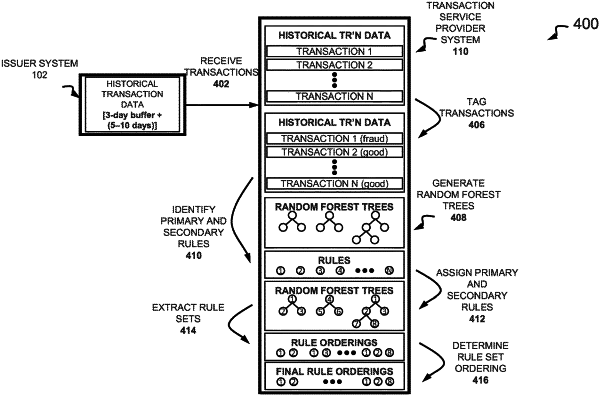| CPC G06Q 20/4016 (2013.01) [G06N 5/01 (2023.01); G06Q 40/02 (2013.01)] | 20 Claims |

|
1. A computer-implemented method comprising:
receiving, with at least one processor, transaction data associated with a plurality of transactions, the plurality of transactions including a plurality of non-fraudulent transactions and a plurality of fraudulent transactions;
generating, with at least one processor, at least one decision tree having a root node and at least one child node operably connected to the root node based on the transaction data associated with the plurality of transactions;
determining, with at least one processor, at least one primary rule and at least one set of secondary rules associated with the at least one primary rule based on the plurality of non-fraudulent transactions and the plurality of fraudulent transactions;
populating, with at least one processor, the at least one decision tree based on the at least one primary rule and the at least one set of secondary rules;
extracting, with at least one processor, a plurality of rule sets from the at least one decision tree;
determining, with at least one processor, an ordering of the plurality of rule sets based on memory-based efficiency characteristics and fraud-detection-based characteristics associated with each rule set of the plurality of rule sets; and
determining, with at least one processor, whether the ordering of the plurality of rule sets satisfy a minimum efficiency threshold.
|